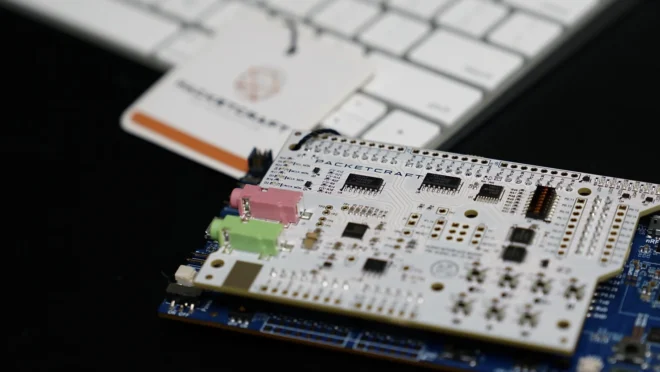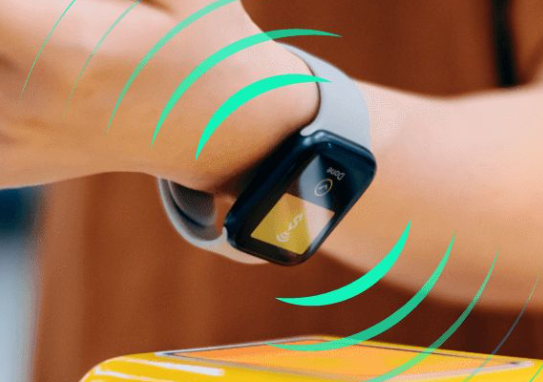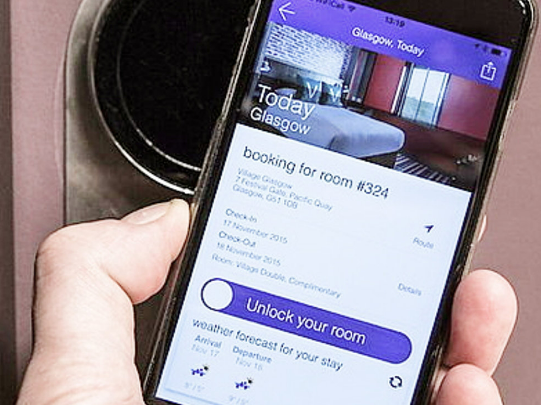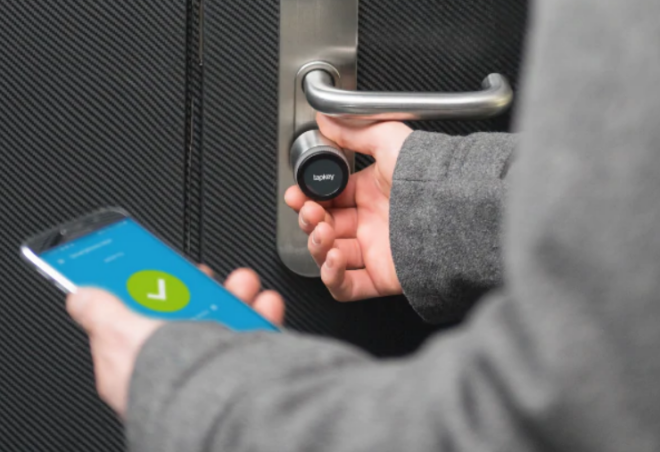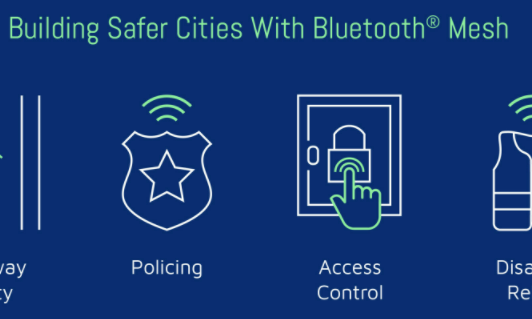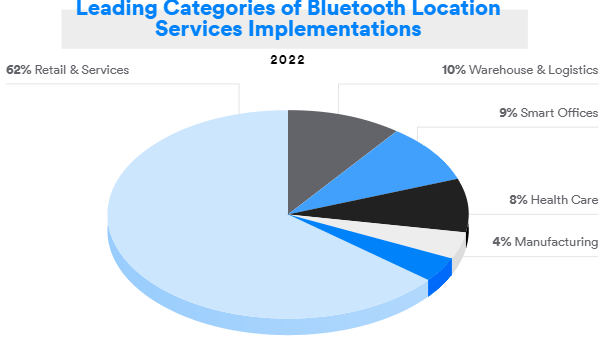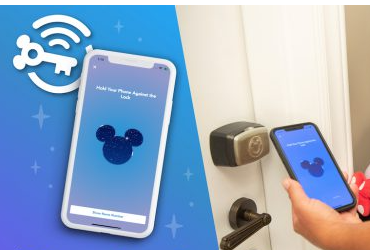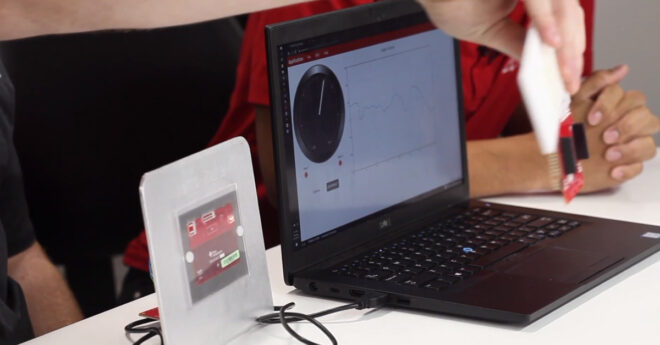For years, Texas Instruments has helped pioneer the transition to integrated circuits (ICs), advancing IC technology, and building on the innovation of each generation to make the technology smaller, more efficient, more reliable, more affordable, and making it possible for semiconductors to go into electronics everywhere.
At the forefront of Bluetooth® Digital Key adoption, Ram Vedantham, business line manager for 2.4 GHz wireless connectivity at Texas Instruments, recently had an opportunity to share some insight into why Texas Instruments is using Bluetooth technology to support their latest digital key innovations.
Q&A with Ram Vedantham, Business Line Manager at Texas Instruments
Bluetooth® technology enables low-cost and low-power solutions, which allows developers to combine multiple different design requirements…on a single device.
Why have you chosen to use Bluetooth® technology to enable your digital key and access control solutions?
We selected Bluetooth® Low Energy (LE) for digital key and access control solutions because the technology is available in a wide range of devices from smartphones to automobiles worldwide. Bluetooth technology enables low-cost and low-power solutions which allows developers to combine multiple different design requirements, like data communication and proximity detection, on a single device.
Using a digital key with Bluetooth LE for communication and ranging, tire pressure monitoring systems (TPMS), wireless cable replacement, and the forthcoming Bluetooth LE Audio are some of the many new applications in the automotive space. TI technology, with innovations such as a connection monitor, has enabled phone-as-a-key (PaaK) solutions using the received signal strength indicator (RSSI) and direction finding features in the Bluetooth specification.
What are the advantages of using a smartphone as a digital key?
The main benefit of a digital key is the convenience of technology consolidation in a single device — the smartphone and the ecosystem and adoption rate that comes along with it. This enables hands-free access and remote key sharing with the flexibility to manage privileges for users on a particular device. This flexibility is shown through a key provision using the cloud by specific users for a limited duration in use cases like rental cars. In addition, the key benefit Bluetooth® technology provides for digital key and access control is the wide adoption of Bluetooth LE on smartphones.
What are the core requirements for a good PaaK implementation and are they secure?
The core requirements for digital key implementation are security, low cost, robust interoperability across a wide range of devices and vehicles, flexibility to adapt to different use cases, and compliance with worldwide standards and regulations.
Security is dependent on the system architecture and implementation. The security of digital keys is dependent on many factors, such as features in physical layer (PHY) implementation for secure ranging, cryptographic security in the software stack, and hardware architecture of the devices that manage the keys used for secure transactions. Security is a function of digital keys based on how these factors are combined to effectively address malicious attacks at the network level or device level. Though it is implementation dependent, Bluetooth technology provides the security features and options that enable secure solutions, including the digital key.

FEATURED PRESENTATION
Car Access With TI Connection Monitor
Learn how the TI Connection Monitor is used to monitor Bluetooth Low Energy communications to estimate the distance between the connection monitor and Bluetooth LE enabled devices in applications such as car access or remote keyless entry.
What are some of use cases beyond automotive and how does Bluetooth® technology satisfy these markets?
Three digital key and access control use cases in which Bluetooth® technology will be integral are access to vehicles, buildings, and personal electronics. With Bluetooth technology, digital keys enable passive entry and start for vehicles (cars, commercial fleets, and two-wheelers). In addition, this technology enables access control in homes, buildings, and warehouses, which will grant the ability to manage privileges using secure digital keys for personnel needing access to specified space. Lastly, digital keys will enable access control for personal electronic devices, such as laptops, enabling a user to access their personal computer.
Bluetooth® technology provides the feature set needed to address requirements for communication between ranging devices in cost, power, and performance.
What role will Bluetooth® technology play in the future of digital keys?
Today, Bluetooth® technology has enabled digital key solutions for hands-free access and remote keyless entry solutions. Bluetooth technology supports secure data communication with options such as range extensions with coded-PHYs. More efficient data transfer with a high data rate and advertisement extension makes Bluetooth technology suitable as a communication link between devices. Combining this with proximity detection, signal strength measurement, and direction finding features extends the use of Bluetooth LE radios for distance measurement as well. However, with increased requirements for the security of digital keys, there is a need for technology that can enable secure and accurate distance bounding to meet market needs.
Secure ranging is becoming an essential component for digital keys because of the benefits of hands-free access and mitigation of security risks, such as relay-station attacks. While UWB (ultra wideband) technology provides accurate distance measurement between ranging devices needed for digital keys, it is also possible to estimate distance using Bluetooth® technology features supported today and reduce the overall system cost. In addition, digital key solutions also require secure communication between the devices involved in secure ranging for functions such as pairing, exchanging capabilities, and data communication. Bluetooth technology provides the feature set needed to address requirements for communication between ranging devices in cost, power, and performance. Therefore, even a digital key solution that is using UWB, Bluetooth technology is required for secure communication between devices for efficient digital key solutions to meet market needs.
![]()
FEATURED REPORT
Bluetooth® Market Update
See the most important trends and forecasts for Bluetooth® technology, and learn how the Bluetooth community continues to solve new connectivity challenges and address new market opportunities.





